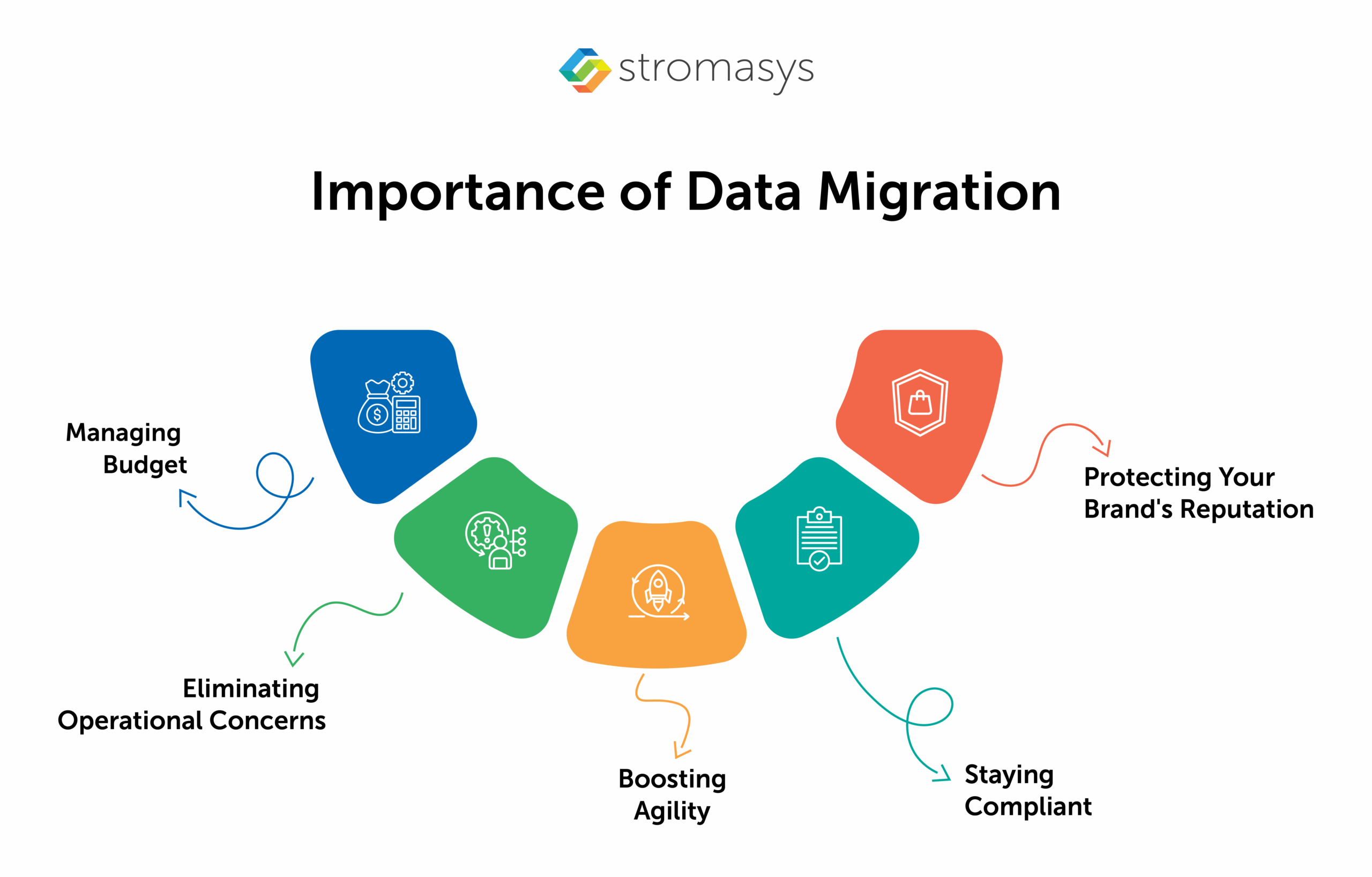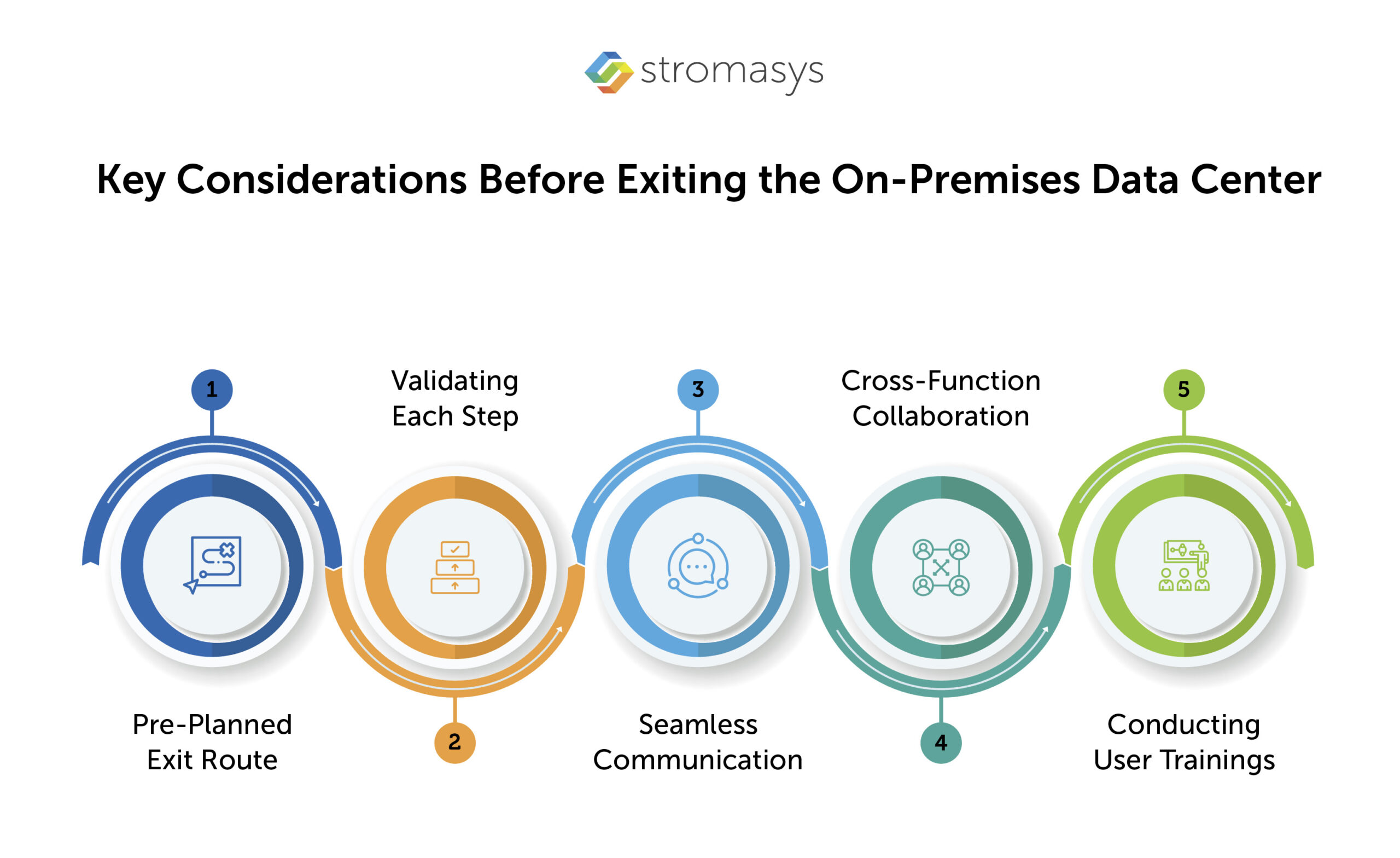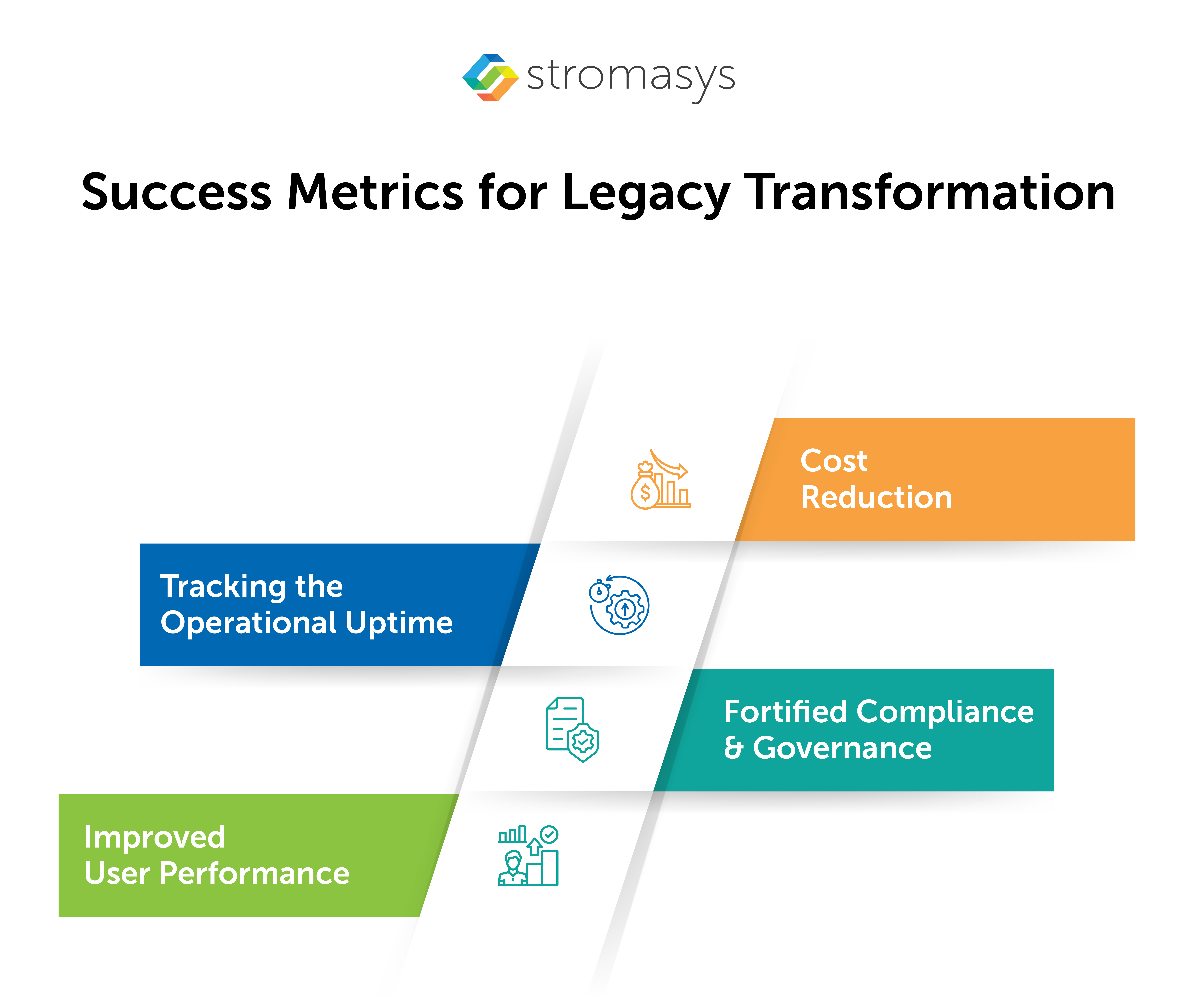
Uncover the future of SPARC Emulation with Charon SSP.
Download Datasheet
Data migrations from legacy systems present significant challenges, including downtime, data integrity risks, operational inefficiencies, and compliance issues. Businesses that struggle with outdated infrastructure, which lacks compatibility with modern systems, create security vulnerabilities and have limited vendor support, while also escalating maintenance costs.
Successful migration requires comprehensive planning, phased implementation, rigorous testing, and seamless alignment between the departments. Without a proper strategy, businesses risk potential data loss, revenue disruption, and damage to customer trust.
Are your business-critical operations still hostage to legacy systems? Then, there is a high chance that you have hit the familiar wall of outdated infrastructure, disrupting your business continuity. I come across the enterprise leaders grappling with the same critical question:

Outdated systems can become expensive to maintain, and their effectiveness can also decline over time. As things worsen, there is a direct threat to business continuity, resulting in revenue losses and increased data security risks. Migration of legacy systems has evolved from a technology initiative to a business survival strategy.
Scalability, agility, seamless integration, and strong security are all critical in the modern business setting. For instance, consider how your system remains vulnerable to data loss due to operational hiccups, soaring maintenance expenses, or worse. If so, your systems are clearly indicating that they need to be upgraded.
How do you extract decades of mission-critical data from systems that predate the iPhone while ensuring zero business disruption? That’s precisely what we’ll tackle in this article.
Drawing from real-world enterprise transformations at Stromasys, ensuring organizations can embrace innovation while preserving their existing critical applications. I’ll walk you through the advanced strategies that separate successful migrations from costly disasters. Ready to turn your legacy challenge into your strategic advantage?
I’ve had firsthand experience with how data migration can transform an organization’s operations as a seasoned professional in legacy migration. Costs are minimized, procedures are streamlined, risks are optimized, agility has been improved, and compliance is maintained. It involves more than just moving data from point A to point B. Unlocking the value of the company consists of utilizing innovation, process optimization, and comprehensive analytics. Data migration is not just a simple IT project but a catalyst for operational transformation. I have come across enterprises that have slashed costs by up to 40% and improved their business operational efficiency. Here are some top reasons why businesses prioritize migration.

Legacy systems are aging, and with them, their maintenance costs are also skyrocketing. It is not just for tech upkeep, but also looking out for experts who can manage those outdated setups is crucial. It’s a complete financial drain and a hassle. By migrating to modern architecture, you can easily eliminate the legacy hardware maintenance costs. You can even streamline efficiencies and redirect resources where they matter most. In my experience, businesses often see a rapid ROI that pays for the migration itself.
Look, dealing with outdated legacy systems can feel like walking on eggshells. Their outdated architecture makes them prone to breakdowns and outages. This can really throw your whole operation into a mess. Data migration will not only ensure business continuity but also boosts flexibility, locks in data reliability, and keeps things humming even through unplanned downtimes.
Those old systems are like heavy chains, holding you back while they kill your speed and creativity. Migration frees you up, creating a flexible setup that integrates with modern tools ensuring that you meet the growing market demands.
Rules like HIPAA, CCPA, and GDPR aren’t optional anymore—they’re must-dos for privacy, security, and audits. A smart migration makes it easy to get your data in line, so you’re not scrambling to meet standards.
A crash, breach, or compliance slip-up isn’t just a blip—it can shatter years of built-up trust and tank your reputation. Getting proactive with solid, modern infrastructure shields your sensitive info and actually strengthens how people see your brand.
Trust me, making this move isn’t just smart—it’s essential for staying ahead without the constant stress.
For several reasons, organizations might choose to delay migrating from outdated technologies. However, it may not be the best option because it might lead to mounting expenses, increasing security risks, and a loss of competitive advantage. This trend can be reversed by data migration, which turns liabilities into assets and opens the door to a more resilient and creative future.
What’s the most significant risk in your data migration? Leaders and decision makers may think it’s the new modern system, but the correct answer is the journey. Organizations’ sensitive information, operational records, and customers’ data are the most priceless assets stored in outdated systems, and every step of extracting them can be hazardous because everything must be accurate, secure, and uninterrupted to preserve business flow and maintain customer loyalty.
Let’s be honest – migrating data from legacy systems isn’t just technically challenging, it’s downright nerve-wracking. Here’s what keeps business leaders up at night:
Don’t kid yourself into thinking these are just remote possibilities. When migrations go sideways (and they often do), these problems become your new reality. Legacy systems exacerbate the situation with their outdated formats, unreliable backup systems, and hardware that is nearing failure.
The truth is, most traditional migration approaches are like walking a tightrope without a safety net – one wrong step and you’re in serious trouble.
At Stromasys, we stabilize those legacy setups, letting you migrate data on your terms at a controlled pace. It helps preserve stability and business continuity while securely moving critical data.
Prevent business disruption from legacy hardware failures with proven strategies by Stromasys.
Migrating from an on-premises data center is a high-stakes launch. If a proper, streamlined migration is not planned, then it can be your worst nightmare. A successful migration process consists of a pre-launch checklist to ensure a smooth and secure journey.
Here are the key considerations that you need to check before migration:

Evaluate whether your legacy systems and data are compatible with the platform. Verify that you can seamlessly integrate and avoid any post-migration operational issues.
Mapping out a tight contingency plan and conducting comprehensive testing to maintain service availability. It will help in avoiding unplanned disruptions in business operations.
Securing the entire sensitive information throughout the migration process to prevent data loss or non-compliance.
It is highly suggested to break the migration process into controlled stages. It helps in managing risks while simplifying any complexities that may occur.
Platforms like Stromasys Charon™ stabilize legacy systems. This helps with paced migration while reducing stress on the IT team.
Designing systems that can seamlessly manage data anomalies, keeping your timeline and business outcome on track.
It is recommended to loop in the stakeholders and keep the staff well-informed at every step with clear and ongoing updates. It will help maintain transparency, keeping everyone informed while addressing issues quickly.
Ultimately, the bottom line is that rushed migrations can create expensive problems, whereas a planned migration enables seamless operations. Designing a data center is a strategy that involves more than simply transitioning from outdated technology to a new one; it is also a smart move towards innovation and continuity.
If you think migration is “copy and paste” at enterprise scale? Think again.
Most migration failures happen before the first byte moves. Here are some key steps to consider before migrating data from legacy systems.
This structured approach doesn’t just move data. It is a transformation of legacy complexity into modern agility, accuracy, and continuity.
Data loss isn’t a negligible risk; it can lead to corporate extinction. It can damage your brand reputation and result in non-compliance. Years of experience and understanding undermine customers’ trust. Protecting it requires a comprehensive strategy and is not a simple checklist.
Here are some non-negotiable strategies and best practices to help prevent data loss during migration:

A migration plan is not complete without a tested alternate option. This option serves as a kill switch, allowing for instant recovery in the event of any unforeseen circumstance.
It is essential to conduct comprehensive testing before and after the migration process. It helps identify any vulnerabilities present in legacy infrastructure before they become obstacles and hinder operations.
It is necessary to inform the stakeholders and teams about the migration process. Maintaining transparency is crucial for building trust.
Seamless alignment of business and IT objectives is necessary to ensure smooth migration. It will also facilitate collaboration for user training, supporting adoption.
Before the migration process begins, it is recommended that teams prepare to work efficiently on the new systems without any issues. Therefore, for a smooth adoption, mistakes should be reduced.
It is not just a framework, but a security protocol to ensure that all necessary and valuable assets, such as the organization’s data, survive the migration journey.
True success depends on the precise, quantifiable business results that demonstrate real value. It includes cost savings, smoother operations, and stronger compliance. Organizations develop metrics that can manage both short-term gains and long-term benefits.
Migration success is measured by the tangible business value it generates. To prove that the investment made, a framework is required that quantifies both technical gains and sustained operational advantages.
Here are the success metrics that organizations should focus on: the following core indicators:

By rigorously tracking these metrics, you can seamlessly transform migrations into powerful business catalysts.
Critical legacy system migration is essential, but it is also fraught with risks. As your trusted guide in legacy transformation for easy and secure data migration, Stromasys brings Charon™ emulation solutions. It easily tackles modernization challenges while protecting core operations.
Transform the aging legacy
with the Stromasys Charon solution and improve your operational efficiencies while securing your data.
Some significant challenges businesses encounter during data migration are downtime, data loss, security breaches, and reduced operational efficiency.
Adopting phased migrations, running simulations, and employing contingency plans will ensure business continuity.
Here is the list of different industry sectors that face legacy migration challenges due to their dependency on decades-old infrastructure: finance, healthcare, manufacturing, and government organizations.
GDPR, HIPAA, and CCPA are key regulations requiring strict data security, privacy, and compliance post-migration.
Data accuracy is maintained through robust validation checkpoints, mapping rules, and pre- and post-migration testing.

Myriam Khan has over a decade of experience in transforming infrastructure across EMEA and Asia markets. She specializes in sales strategy and legacy infrastructure transformation to drive innovation and growth. Myriam is a dedicated sales leader with Stromasys who works closely with customers and partners to deliver tailored solutions that effectively manage legacy application operations and mitigate infrastructure challenges.
The corporate IT landscape is evolving rapidly, presenting significant challenges for businesses. One major issue...
Read MoreDEC Alpha hardware has been pivotal to many businesses due to its reliability, performance, and...
Read MoreLegacy application migration is a new trending buzz of IT discussion. Businesses are migrating from...
Read MoreDon't let your legacy systems slow you down! Contact us today and transform your legacy environment into a dynamic, agile platform for success.
Kickstart your journey towards a more efficient and streamlined business environment with just one click.